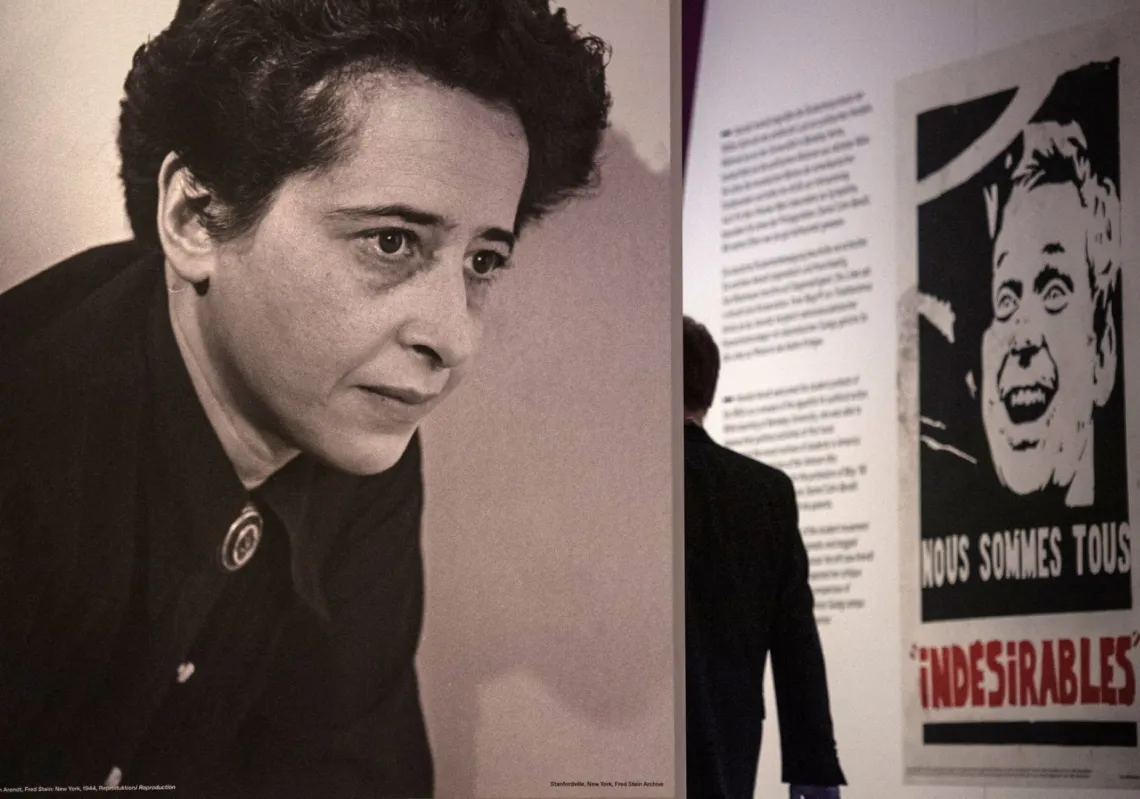Al-Qaeda was linked to the Taliban through the "pledge of allegiance" that Osama bin Laden first offered in the 1990s to his Taliban counterpart Mullah Omar.
The two sides renewed the "pledge of allegiance" several times, although the Taliban has not publicly acknowledged it. The Taliban agreed not to allow al-Qaeda or any other extremist group to operate in areas under their control under the 2020 peace agreement with the United States.
Allegiance means a pledge of loyalty to a Muslim leader. It is the basis of loyalty among many extremist groups and their affiliated organizations and entails duties for both parties, including obedience to the “Commander of the Faithful,” which here means the leader of the Taliban.
Breaking the covenant is considered a grave crime in the “literature” of al-Qaeda and the Taliban, and, in the case of al-Qaeda offering allegiance to the Taliban, this means that it is actually subject to the Taliban, by granting the title of “Commander of the Faithful” to the leader of the Taliban and his successors.
Al-Qaeda is an extremist Islamic organization founded by Osama bin Laden - along with Abdullah Azzam - in the late eighties. Al-Qaeda began as a logistical network to support the "Mujahideen" fighting against the Soviet Union during the Afghan war and succeeded in recruiting new members following the withdrawal of the Soviets from Afghanistan in 1989.
The alliance between al-Qaeda and the Taliban has continued since 1989 and the two groups remain engaged in cooperation with shared expectations of future consultation and cooperation.
Al-Qaeda today includes disparate networks around the world with asymmetrical central control. Its main branches are located in the Middle East, most notably: Guardians of Religion Organization in Syria, Al-Qaeda in the Arabian Peninsula in Yemen, Jama'at Nasr al-Islam wal Muslimin (Group for the Support of Islam and Muslims—JNIM) in the Sahel, and Al-Shabab in Somalia, as well as the global leadership of al-Qaeda and the local affiliate of al-Qaeda in the Indian subcontinent.

Afghanistan remains a central strategic node for al-Qaeda and a haven for its leaders. In addition to al-Zawahiri, many other senior leaders are likely to reside in Afghanistan, including Saif al-Adel and Amin Muhammad ul-Haq Saam Khan.
Afghanistan is considered the main headquarters of al-Qaeda and it is led by Osama Mahmoud and his deputy, Atef Yahya Ghauri.
US intelligence agencies estimated that in early 2021 al-Qaeda was at its weakest in years with fewer than two hundred members in Afghanistan. But now the number in Afghanistan has likely doubled to four hundred, with most members coming from Afghanistan, Bangladesh, India, Myanmar and Pakistan. This increase comes after the Taliban provided a safe haven for al-Qaeda.
The relationship between the Taliban and al-Qaeda
The relationship between the Taliban and al-Qaeda dates back to the Afghan "jihad" against the Soviet Union, with al-Qaeda and the Haqqani network linked by marriages between the families of key leaders.
Al-Qaeda also remains very popular among the Taliban. There appears to be a consistent political basis for this relationship. Al-Qaeda sees the Afghan Taliban as a capable ideological partner in its leadership of the "global jihad," a group whose virtues al-Qaeda can exalt before the Muslim world.
It is also likely to see the Taliban as a powerful ally, whose resurgence in Afghanistan will provide significant political and material advantages.
It is possible that the Afghan Taliban will view the group from the perspective of its ideological vision based on the "Hanafi school of Islam," the centrality of "jihad" in its interpretation of Islamic texts, and its role and status as "guardians of Islam" in the Afghan society.
Al-Qaeda is also aligned with major parts of the Taliban agenda, as it is one of the main sources of al-Qaeda's "jihadist" project. More importantly, al-Qaeda continues its "jihadist" project by subordinating its Salafi ideology, at least rhetorically, to the Taliban's status as the ultimate ruler in religious matters.
Important Afghan Taliban leaders, such as deputy chief Sirajuddin Haqqani and senior military commander Ibrahim Sadr, remain sympathetic to al-Qaeda.
Al-Qaeda's relationship with the Haqqani network
Jalaluddin Haqqani formed the Haqqani Network in the late 1970s and he is one of the first Afghan "Mujahideen" who played a pivotal role in the political system of the southeastern Afghan provinces of Khost, Paktia and Paktika.
Haqqani served as Minister of Tribal and Border Affairs from 1996 until 2001.
The Haqqani Group, an Afghan insurgent group that emerged more in the 1980s, fought against Soviet forces and, over the past years, against the US-led NATO forces and the former Afghan government. Sirajuddin Haqqani has served as the Taliban's first deputy leader since 2016.
The US government maintains a $10 million bounty on Haqqani for numerous kidnappings and significant attacks against US and coalition forces in Afghanistan, the Afghan government, and civilian targets.
But the sons of Haqqani from the eastern province of Khost differed with others in the leadership of the Taliban, most of whom are from the southern provinces of Helmand and Kandahar.
Some believe that Sirajuddin Haqqani wants more power. Other Taliban figures have opposed violent attacks by Haqqani followers against civilians in Kabul and elsewhere.
Both the Taliban and the Haqqani network continue to maintain strong links with al-Qaeda. According to a 2021 United Nations report, the Haqqani network remains "a hub for communication and cooperation with regional foreign terrorist groups and is the primary link between the Taliban and al-Qaeda.”
Khalil Haqqani is "known to US intelligence as the Taliban's envoy to al-Qaeda." Stanford's book "Mapping Militant Organizations" explains that Khalil "acted on behalf of al-Qaeda and facilitated its terrorist operations" and "organized the detention of prisoners captured by the Haqqani network and al-Qaeda."

Experts also believe that al-Qaeda and the Haqqani network are intertwined today. In this context, the US Treasury concluded: "As of 2020, al-Qaeda is gaining strength in Afghanistan as it continues to work with the Taliban and senior figures of the Haqqani Network have discussed the formation of a new joint unit of armed fighters in cooperation with al-Qaeda."
Al-Qaeda's relationship with Iran
The relationship that al-Qaeda and Iran have forged has enough cooperative dimensions to be extremely beneficial to both. From Iran's point of view, the most obvious advantage of enabling al-Qaeda to survive and operate is al-Qaeda's abstention from attacking Iran or its loyalist groups.
Iran's assistance to al-Qaeda in maintaining its senior leadership and command structure has enabled the group to defy the United States and some of its anti-Iranian allies. Iran is reaping the benefits of the persistence of al-Qaeda and its affiliate groups across Africa, the Middle East, and South Asia, keeping the United States engaged and less focused on countering Iran and its expanding coalition network.
Iran has cooperated with al-Qaeda covertly and often by proxy. This secret cooperation began in the early 1990s in Sudan, and continued after al-Qaeda's move to Afghanistan, and even manifested itself on Iranian soil before, during, and after the September 11 attacks.
Although the authorities were known for this cooperation, the United States formally accused Iran for the first time in July 2011 of forming an alliance with al-Qaeda that included harboring al-Qaeda operatives on Iranian soil and helping al-Qaeda transport money, weapons, weapons, and fighters.
In a 2007 letter bin Laden sent to a person named Karim, bin Laden provided a justification for not attacking Iran by saying: "Iran is the main artery for finance, human resources and communications. Moreover, there is no need to fight with Iran unless we have to."
Bin Laden strongly advised against any attack on Iran, and had gone to great lengths to urge any ambitious agents to seek advice or permission before any form of retaliation against Iran.
Al-Zawahiri was killed in Kabul
Hours after al-Qaeda leader Ayman al-Zawahiri was killed in a US drone strike in central Kabul, Taliban security forces rushed to seal off the site and green tarps were thrown over destroyed windows. Barriers were set up and trading was closed.
The strike in the early morning of July 31, 2022—the strike that revealed the Taliban had harbored al-Zawahiri, a master planner for the September 11, 2001, attacks, in the heart of the Afghan capital—was a watershed moment for the group's new government.
The strike highlighted the fact that the Taliban did not carry out radical reforms from its first regime in the 1990s but remained a haven and hotbed for extremist groups threatening international security. Some media outlets revealed that the house in which al-Zawahiri was staying belonged to the leader of the Haqqani network in Afghanistan.
Conclusion
Al-Qaeda’s relationship with the Taliban movement is a solid organizational relationship based on the fact that al-Qaeda and its leader Bin Laden, and later al-Zawahiri, pledged allegiance several times to the Taliban movement.
Al-Qaeda considers the Taliban movement the “guardian” of Muslims around the world. This kind of relationship and this kind of understanding reveal the extent to which bin Laden and al-Zawahiri had become entrenched in offering full loyalty to the Taliban.
The proof of this kind of relationship is its continuity from 1989 until the present. Al-Qaeda considers offering the pledge of allegiance to the Taliban as a “debt in its neck.”
Here it is worth noting that the Taliban refused to hand over bin Laden to the United States of America, so that Washington declared war on the Taliban after the events of September 11, 2001.
Whoever delves into the secret of the Taliban's position not to extradite bin Laden at that time will discover that bin Laden was the executive for the Taliban movement in carrying out the September 11 attacks and carrying out terrorist operations around the world.
Here, the role of the Haqqani network appears, in managing al-Qaeda and its terrorist operations around the world, since the Haqqani network is the one that has so far provided the Taliban's intelligence and security.
Returning to the Haqqani network, it also has historical ties and relations with Iran, and this may have been behind the al-Qaeda leaders’ orientation to Iran in the aftermath of September 11, 2001.
History may repeat itself after the Taliban’s rise again in Afghanistan in 2021 and the withdrawal of the United States.
Just as the leaders of al-Qaeda and the bin Laden family headed towards Iran, today it is likely that some of the al-Qaeda leaders who were in Iran have settled in Afghanistan, to begin a new stage of work within the triangle formed by the Haqqani network - the Taliban - al-Qaeda and Iran.
Al-Zawahiri was just an audio “phenomenon” issuing messages, not to mention that he was old and was suffering from many health problems, and it is likely that the one who runs al-Qaeda was not the “Apparent Caliph” Al-Zawahiri, but rather the Haqqani network in partnership with Iran, which was reading closely the geopolitical developments and US policies towards Iran and Afghanistan.








